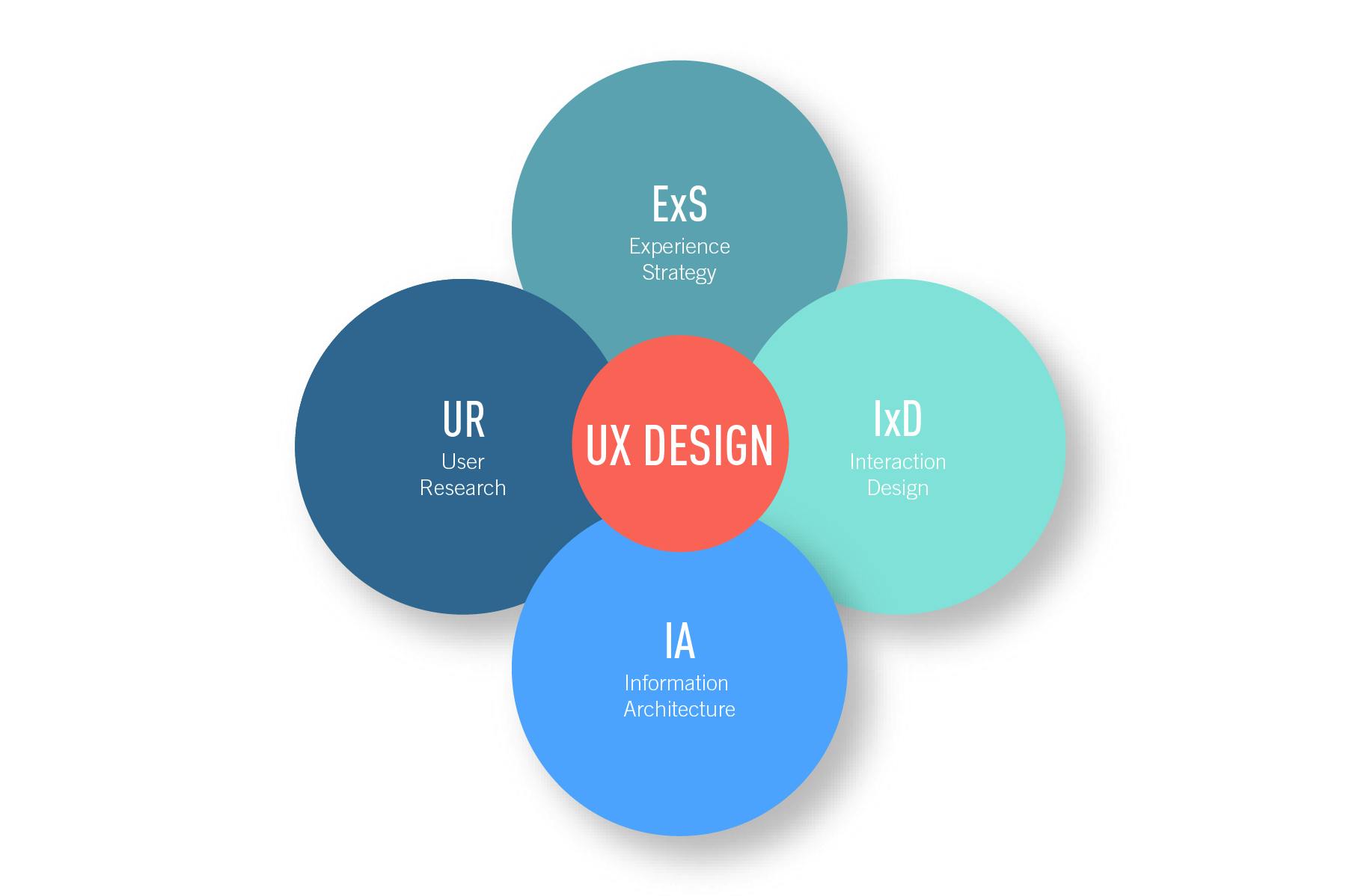In this blog post, I will introduce you to the quadrant model, which is a useful way to understand the different specializations of UX design and how they work together.

The quadrant model was proposed by Dan Saffer in his book Designing for Interaction. The quadrant model is grouped into four main disciplines:
Experience Strategy (ExS)
User Research (UR)
Information Architecture (IA)
Interaction Design (IxD)
Experience Strategy - This discipline is about devising a holistic business strategy, incoporating both the customer's needs and those of the company, such as the vision, goals, value proposition, business model, and brand identity of a product or service. It's a UX strategy's job to make sure that everyone is serving the right users while simultaneously aligning with the strategic goals of the business.
User Research - This discipline is concerned with understanding the users, their behaviours, needs, motivations, preferences, and pain points. User researchers conduct various methods of data collection and analysis, such as interviews, surveys, observations, usability testing, and analytics.
Information Architecture - Information architecture is the science of organizing and structuring content. Information architecture has roots in both cognitive psychology and library science. Information architects use tools such as sitemaps, wireframes, diagrams, and prototypes to communicate the information architecture to the design team and stakeholders.
Interaction Design - Is concerned with designing the interactive elements of a product or service, such as buttons, menus, forms, gestures, animations, sounds, etc. Interaction designers answer questions like: “What happens when a user clicks a button?” or “How will the user transition between different pages on a mobile app?” Ultimately, they look at how to reduce friction between the product and the user.
The quadrant model shows how these four disciplines are related and interdependent. They are not mutually exclusive or isolated from each other. Rather, they overlap and complement each other in different ways. For example:
Experience strategy provides the vision and direction for user research, information architecture, and interaction design.
User research informs and validates the experience strategy, information architecture, and interaction design.
Information architecture supports and guides the user research and interaction design.
Interaction design implements and enhances the experience strategy, user research, and information architecture.
The quadrant model is not a rigid or fixed framework. It is a flexible and adaptable tool that can help you understand the different facets of UX design and how they work together.
I hope this blog post has given you a clear overview of the quadrant model of UX design. If you want to learn more about this topic or any other aspect of UX design, feel free to ask me anything. I’m always happy to help you improve your user experience skills. 😊


